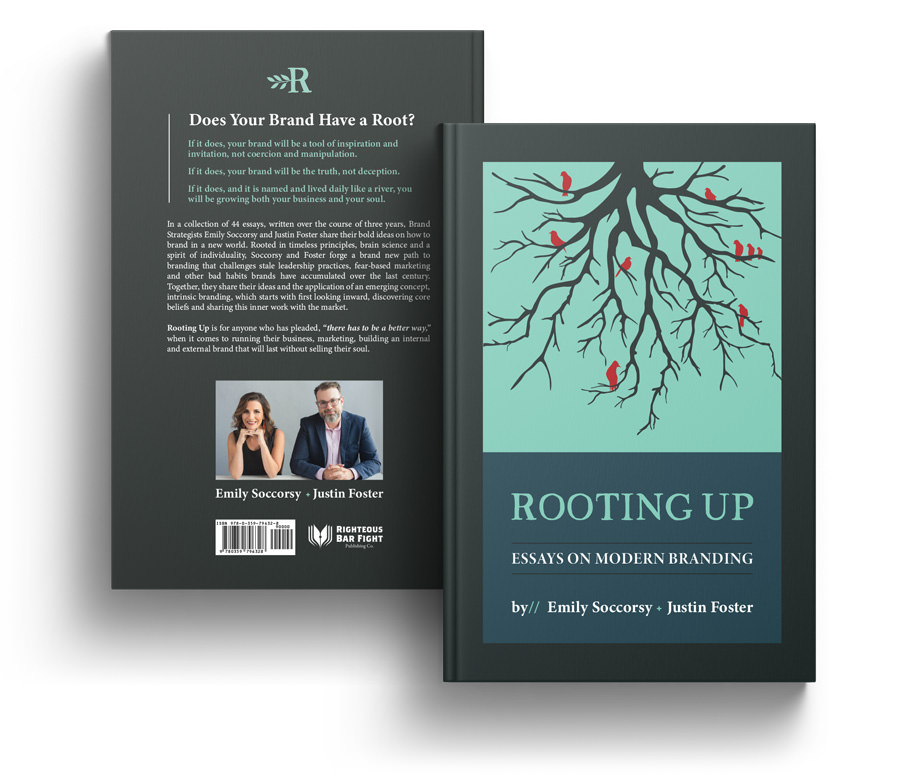Filed Under: Humanistic Marketing
It’s January 2022. You have your 2022 business plan. You have your revenue generation strategy. You have your marketing plan. You have your personal growth plan.
Then life happens. And it all goes to shit.
The market shifts, new regulations happen, a new competitor arrives on the scene, a key client cancels their contract, a personal crisis pops up unexpectedly. None of this means your plans failed or your strategy is flawed. What it means is that a large part of being a human and being in business is highly volatile and unpredictable.
A disruption, a change of plans is a test of your resiliency and flexibility. It is a tremendous opportunity to learn to shift your attention, energy and resources to present realities. This is the kind of skill that really serves you and your business in a real crisis situation.
One of my sons is a professional artist here in Austin. In 2020, he gave me a profound and simple piece of counsel: focus on the Art. The “Art” is different for every entrepreneur and business leader. For me, the Art is expressing my ideas and beliefs via writing and video. For others, the art is in the numbers. Or in the creation of new products. Or in the development of other people. Whatever your Art is, giving it the highest priority when things fall apart will re-ground you and re-energize. Creation is action. And every change of plans requires a change of action.
So when your plans change and strategies shift, what do you focus on? Here are a few areas that will help you get re-centered and re-focused.
Focus on relationships. Client delight is the business version of keeping the romance burning in a relationship. The relationships with your clients and customers have many of the same traits as a personal/intimate relationship. They each have a love language. They each want to be affirmed and listened to. Your work here is two-fold. First, remember that romance is where intentionality meets novelty. So do unexpected things that bring delight and joy. Second, be aware of the three most corrosive elements in any relationship: boredom, complacency and resentment. Be willing to have those tough conversations.
Focus on thought leadership. This really should be called “belief leadership” because you grow your brand as a thought leader not by talking about your expertise (expertise is a commodity), but by expressing your ideas, beliefs and concepts.
- Invest time in refining and clarifying your core philosophy. Be sincere but provocative. Be a hopeful heretic. Say what others are unwilling to say. Be honest about how your industry is perceived. Talk about social issues. As we say, taking a stand is good for your brand.
- Examine where you are creating actual intellectual property. Look at the subconscious wants/needs/fears/problems of your ideal audience. Then be absolutely clear about what problem you are addressing. By bringing the subconscious into the conscious, you are creating trust, relatability and credibility.
- Map out your processes and methodologies and name them. This is the “what and how” of what you do. This will help you use your systems and methods as differentiators. When you consider this part of your brand, your audience will learn why it’s important to them.
Just like in life, most suffering in business is wanting things to be different than they are. But when you accept reality, assess your resources and take action, you will find harmony and opportunity in the maelstrom of change. And this is really what being a leader and/or entrepreneur is all about.
I will leave you with a quote from one of my favorite and most influential thinkers, Alan Watts:
“The only way to make sense out of change is to plunge into it, move with it, and join the dance.”
See you on the dance floor!
